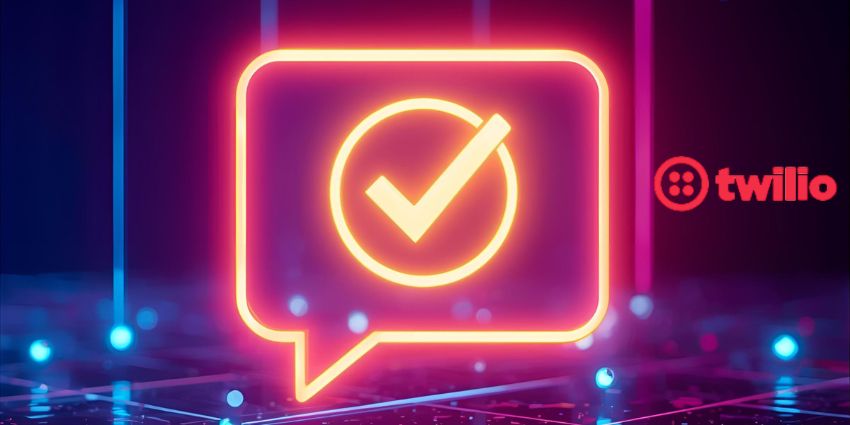For decades, SMS has been the workhorse of business messaging: universal, cheap, and simple – but also increasingly untrustworthy.
According to the Federal Trade Commission, text-message fraud cost US consumers $470 million in 2024.
And as scams proliferate, consumer trust in digital communication is eroding – and with it, the effectiveness of a channel once prized for its reach.
Enter Rich Communication Services (RCS), the long-heralded successor to SMS.
This week, Twilio announced the general global availability of RCS across its messaging platform.
The launch promises not just richer functionality – buttons, carousels, media – but also something more fundamental: verified, branded messaging that can help close the trust gap between enterprises and their customers.
“Building engagement with your customers should be as seamless and trusted as possible,” said Inbal Shani, Chief Product Officer and Head of R&D at Twilio.
RCS makes this a reality by delivering richer interactions, improved deliverability, increased trust in your brand.
“This represents a fundamental shift in how businesses can communicate with their customers through Twilio’s trusted, simple, and smart platform.”
But is this technology truly ready to reshape enterprise communication, or another over-hyped messaging standard?
What CIOs Need to Know: Integration Without the Pain
From an IT perspective, Twilio has made adoption relatively straightforward.
Existing customers can enable RCS with no code changes, while new customers can run SMS and RCS side by side through a single API. Automatic fallback ensures messages default to SMS if RCS is unavailable, reducing the risk of service gaps.
For CIOs, the message is clear: this is not a rip-and-replace technology.
RCS fits into existing architectures without extensive re-engineering. The platform manages carrier registration and device compatibility in the background – removing the integration headaches that have slowed RCS adoption in the past.
The implication? Enterprises can experiment at low cost and scale selectively, rather than making a risky upfront commitment.
What CMOs Will Notice
If CIOs worry about integration, CMOs care about customer trust and engagement.
Here, RCS is compelling. Messages are branded and verified, carrying company logos, taglines, and Google-verified sender IDs.
This instantly separates genuine communications from spam, addressing one of the biggest barriers to customer engagement.
According to a study from Futurum Research, businesses using RCS experience a 32 percent increase in customer engagement and conversion rates compared with SMS.
Practical applications range from interactive product carousels in retail, to verified banking alerts, to service bookings.
What CFOs Will Ask
For finance leaders, the case for RCS rests on two levers: revenue growth and fraud reduction.
-
Revenue Growth: Higher conversion rates and deeper engagement translate into increased sales. The ability to transact – book, buy, pay – within a messaging thread reduces customer effort, shortening sales cycles.
-
Fraud Reduction: By authenticating the sender, RCS directly addresses the financial and reputational risks of SMS spoofing. Given that fraud losses are measured in billions globally, the potential savings are significant.
The unanswered question is whether adoption will be broad enough to justify investment.
Here, Apple’s decision to support RCS from iOS 18.2 is pivotal, making the technology truly cross-platform for the first time.
The Bigger Picture: Messaging as a Strategic Channel
Adam Holtby, Principal Analyst at Omdia, captures the broader shift: “The significance and potential of RCS goes beyond just uplift – the capability will help reshape business messaging into an interactive, trusted, and transaction-ready channel.
What was once a one-way notification system is becoming a two-way enriched workflow – one where payments, authentication, and service requests can be completed without leaving a messaging app.
This reframes business messaging from a low-cost notification tool into a transaction-ready channel – a shift with strategic implications for how enterprises structure customer journeys.
If the inbox becomes the new homepage, as Google suggests, RCS could emerge as the default gateway for customer engagement.
The Bottom Line for Enterprise Buyers
Twilio’s launch positions RCS as more than a technical upgrade. For CIOs, it reduces integration risk. For CMOs, it enhances brand trust and engagement. For CFOs, it offers a clear cost-benefit story in fraud prevention and conversion uplift.
The barriers to adoption – carrier readiness, regional variation, consumer awareness – remain. But with Apple now on board, those barriers are falling fast.
The decision for enterprise buyers is no longer whether RCS will matter, but how soon to bring it into the communications mix – and what competitive advantage early movers may capture.







